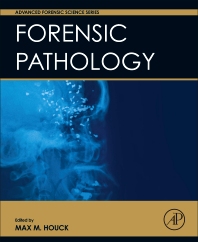Books in Forensic pathology
Books in Forensic pathology

Postmortem Toxicology
- 1st Edition
- Timothy P. Rohrig
- English

Dismemberments
- 1st Edition
- Ann H Ross + 1 more
- English

Molecular Pathology and the Dynamics of Disease
- 1st Edition
- Maika G. Mitchell
- English

Paleopathology of Children
- 1st Edition
- Mary Lewis
- English

Forensic Pathology
- 1st Edition
- Max M. Houck
- English

Comparative Osteology
- 1st Edition
- Bradley Adams + 1 more
- English

Forensic Dental Evidence
- 2nd Edition
- C. Michael Bowers
- English

Molecular Photofitting
- 1st Edition
- Tony Frudakis Ph.D.
- English

Forensic Neuropathology
- 1st Edition
- Hideo H. Itabashi MD + 4 more
- English

Encyclopedia of Forensic and Legal Medicine
- 1st Edition
- Roger W. Byard + 4 more
- English